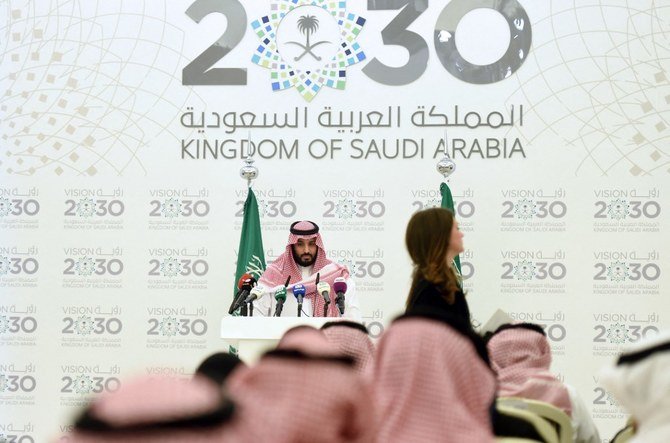
- ARAB NEWS
- 01 Jul 2025

Saudi Crown Prince Mohammed bin Salman’s announcement that the Kingdom aims to invest SR27 trillion ($7 trillion) by 2030 through an ambitious partnership between the government and private sectors has clearly set the guidelines of the National Investment Strategy to achieve the Vision 2030 goals.
The government will invest more than SR12 trillion through additional state spending over the next 10 years while the private sector will spend SR5 trillion over the same period. The public sector’s contributions will be made through specific sources such as the Public Investment Fund, which is expected to fund SR3 trillion, the Shareek program, which will contribute SR5 trillion, and the NIS is set to provide a fund amounting to SR4 trillion.
The planned expenditures will focus on manufacturing, renewable energy, tourism, digital infrastructure, transport and logistics, healthcare and manufacturing to propel the Kingdom to be among the top 15 global economies by 2030.
The enablers to achieve this bold and ambitious program are already underway, including a program to diversify the Kingdom’s economy away from oil revenue, putting a greater emphasis on foreign technology transfers, and the up-skilling of Saudi human resources through the recently announced National Education Development Program.
All of this will open the door to more effective international participation with anticipated annual foreign direct investment inflows projected at SR388 billion, and domestic investment to reach SR1.7 trillion annually by 2030. The enhanced legal system to comply with the international standards to safeguard both domestic and international investors will create more certainty for such a planned investment inflow as will the ruthless crackdown on corrupt practices in government project allocation.
The plans announced by the crown prince expect to raise the private sector’s contribution to GDP to 65 percent by 2030 from around the current 42 percent.
Dr. Mohamed Ramady
The new investment initiative underscores the need to further improve the Kingdom’s overall ranking in the Global Competitiveness Index to be amongst the top 10 economies of the world by 2030.
This goes hand in hand with enhancing FDI attractiveness through the newly created Ministry of Investments under a capable and well-respected minister, Khalid Al-Falih, and by reducing the red tape by adopting new e -government initiatives.
The plans announced by the crown prince expect to raise the private sector’s contribution to GDP to 65 percent by 2030 from around the current 42 percent.
Such lofty goals have not been drawn out in a vacuum but are based on the Kingdom’s experiences gained by leading top economies at the G20.
The main objective of all these initiatives is to ensure better quality of life for Saudi citizens and create sustainable job opportunities. The government aims to ensure the prosperity of future generations by reducing the unemployment rate to around 7 percent, for both males and females, from the current levels of 12 percent.
• Dr. Mohamed Ramady is a former senior banker and professor of finance and economics at King Fahd University of Petroleum and Minerals, Dhahran.